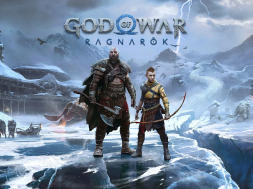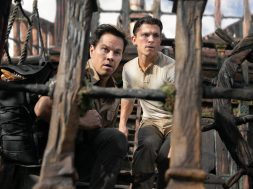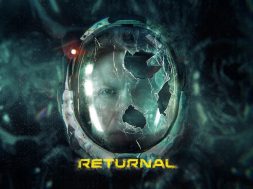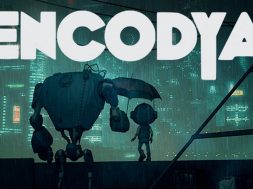Review: Doctor Who: Engines of War
“War changes everyone…even the Doctor.”
Whovians, do you remember how you felt last year on May 18th? The Name of the Doctor was on. We watched through the entire episode, generally being amazed by all of the great throwbacks to the past and extremely-creepy villains…and then came the ending. For the first time, we saw John Hurt’s shadowy and mysterious incarnation of the Doctor, hitherto-unseen and unknown to us, and it was one of the single most dramatic plot twists in Doctor Who‘s history. The rest of that year gave us a few more hints as to his identity, eventually culminating in The Night of the Doctor and The Day of the Doctor revealing to us that he was the Doctor who fought in the Last Great Time War, the Doctor who endured countless horrors and committed more, to the point where he disowned his own identity due to no longer feeling worthy of it. The Time War has been an enormous source of intrigue for the Doctor Who fanbase for a long time, and many of us wondered: will we get a story set during it?
We certainly did.
Author George Mann takes the reins for Engines of War, the debut novel of John Hurt’s War Doctor. Writing about the Time War has ever been a tricky subject, the series proper generally only allowing the briefest of glimpses at its events, and the author himself has said that the process was a daunting one. Did he manage to do the defining plot point of the modern series justice?
 Engines of War opens on the war-torn planet of Moldox, located in a region of space known as the Tantalus Spiral. Once an incredibly beautiful planet, Moldox is now little more than ruins, rubble and mud. The cause of this is, naturally, the Daleks, who invaded, crushed, and occupied the world several years before the events of the novel take place. The humans on Moldox are invariably killed on sight, occasionally rounded up to serve the Daleks as slave labour, or put to another mysterious use inside the Dalek saucers. We see this from the point of view of a young woman known only as Cinder, on account of her fiery red hair. Cinder is a “Dalek hunter”, a member of Moldox’s scattered resistance against their new tyrannical overlords. She’s an orphan of the war who isn’t entirely sure that there’s anything left to live for beyond killing as many Daleks as she can before she goes, and we come into the story right as an attempted ambush goes wrong for her, leaving her in an incredibly-precarious situation. Meanwhile, high above Moldox, a little blue box materialises…
Engines of War opens on the war-torn planet of Moldox, located in a region of space known as the Tantalus Spiral. Once an incredibly beautiful planet, Moldox is now little more than ruins, rubble and mud. The cause of this is, naturally, the Daleks, who invaded, crushed, and occupied the world several years before the events of the novel take place. The humans on Moldox are invariably killed on sight, occasionally rounded up to serve the Daleks as slave labour, or put to another mysterious use inside the Dalek saucers. We see this from the point of view of a young woman known only as Cinder, on account of her fiery red hair. Cinder is a “Dalek hunter”, a member of Moldox’s scattered resistance against their new tyrannical overlords. She’s an orphan of the war who isn’t entirely sure that there’s anything left to live for beyond killing as many Daleks as she can before she goes, and we come into the story right as an attempted ambush goes wrong for her, leaving her in an incredibly-precarious situation. Meanwhile, high above Moldox, a little blue box materialises…
It’s a simple opening, but the plot is subsequently anything but, taking the War Doctor and Cinder on a rollercoaster of a journey that leads from Moldox to Gallifrey to Moldox again and more. The novel promises that its story will have serious ramifications on the universe, and it marvellously delivers in that regard. Callbacks to characters and locations of the past are rife and enjoyable, while foreshadowing of the modern series is sprinkled throughout and handled very deftly. Events that are set up very early on in the tale pay off in a big way later, and generally the resolution of things is tight and extremely satisfying to read. The ending itself, without spoiling it, gave me chills. It’s a high-octane, no-holds-barred Doctor Who plot, the kind of thing I could see working rather well as a film (listen close, BBC!).
Naturally, people are reading this story for one key reason, and that is to see some further depiction of the Last Great Time War itself. The novel is certainly the most outright and lengthy telling of the horrors of the war seen yet, and it utterly succeeds in portraying how desperate things have become, how powerful both sides have grown in their quest for dominance. The Time Lords have largely retreated into themselves, becoming even more isolationist and withdrawn than we have previously seen. Their arrogance and self-righteousness remains entirely intact, however, and this becomes plain for all to see as the story progresses. They’re stubbornly defending themselves and gradually failing, unable to match the sheer ingenuity and power of the Daleks. Not that it’s for lack of trying, mind you. We see entire fleets of Battle TARDISes take on fleets of Dalek vessels; new superweapons capable of unimaginable destruction; further experiments that are stunningly barbaric.

Not that the Daleks themselves don’t steal the scene, of course. Engines of War is, in my mind, probably the finest portrayal of the Daleks to date. They are horrifically powerful, the Time War having driven them to ever-greater heights. Through Cinder’s eyes we see what it really means to face the universe’s perfect killing machines, and the terror that ensues as a result. They’re cold, calculating, and willing to go to any lengths to ensure total Dalek victory, whether it’s invading twelve different time periods at once or developing stealth ships that can completely evade TARDIS sensors and lurk in the Time Vortex for years without moving. The above-mentioned Moldox resistance is portrayed, in no uncertain terms, as ultimately ineffectual, no match for their conquerors. There’s one particular revelation over the course of the story revolving around the Skaro Degradations, first mentioned in David Tennant’s swansong The End of Time, that is all at once the most terrifying, brilliant, and typically-Dalek idea ever put to paper. It’s a thing of beauty, seeing the Doctor’s nemeses portrayed in such a refreshingly-scary way, and I’d love to see more of it.
 Speaking of the man himself, I suppose that’s a fairly decent way to segue into the character development of the novel, which is one of its best bits for sure. We meet the War Doctor as an old, tired veteran, gradually ground down and worn away by literally centuries of unceasing warfare (four hundred years minimum, as the story informs us early on). He’s still definitely the Doctor, his trademark wit and intelligence present and accounted for, but his usual traits are now blended with a general sense of being fed up with everything alongside quite a surprising temper. He’s relentlessly pragmatic in his approach to dealing with problems, taking a significantly more direct route than other Doctors might (his introductory scene is a marvellous example of this). A key development, of course, is that he travels alone. He refuses to bring a companion into this new lifestyle of his, and for good reason.
Speaking of the man himself, I suppose that’s a fairly decent way to segue into the character development of the novel, which is one of its best bits for sure. We meet the War Doctor as an old, tired veteran, gradually ground down and worn away by literally centuries of unceasing warfare (four hundred years minimum, as the story informs us early on). He’s still definitely the Doctor, his trademark wit and intelligence present and accounted for, but his usual traits are now blended with a general sense of being fed up with everything alongside quite a surprising temper. He’s relentlessly pragmatic in his approach to dealing with problems, taking a significantly more direct route than other Doctors might (his introductory scene is a marvellous example of this). A key development, of course, is that he travels alone. He refuses to bring a companion into this new lifestyle of his, and for good reason.
Of course, Cinder comes along and ruins that fairly quickly, the two getting stuck together by various circumstances as so many companions have done. Cinder’s a standout point of the novel in my opinion, a marvellous character. She’s plucky, like many of the Doctor’s companions, but in this case more out of a sense of duty, or a coping mechanism to deal with the horrors of her everyday life on war-riddled Moldox. Her change from a character who believes there’s nothing left to live for to one who actively hopes for a brighter tomorrow once she hears about the rest of the universe from the Doctor is handled excellently, and I genuinely cared a great deal for her reading it. In turn, she causes something of a development with the Doctor, reminding him of his own humanity in an odd way. The duo have a great off-the-cuff relationship as two warriors fighting the same war, and they bounce off of each other with ease.
All in all, as I’m sure you can tell at this point, I can’t recommend Engines of War enough. It’s a stellar Doctor Who story in its own right, with a great plot, terrifyingly well-realised setting, and sublime character development. More than that, though, it’s the first full-length story for the War Doctor, and I can only hope there’ll be more to come.
George Mann deserves commendation for this one, I couldn’t criticise it if I tried. 10/10











